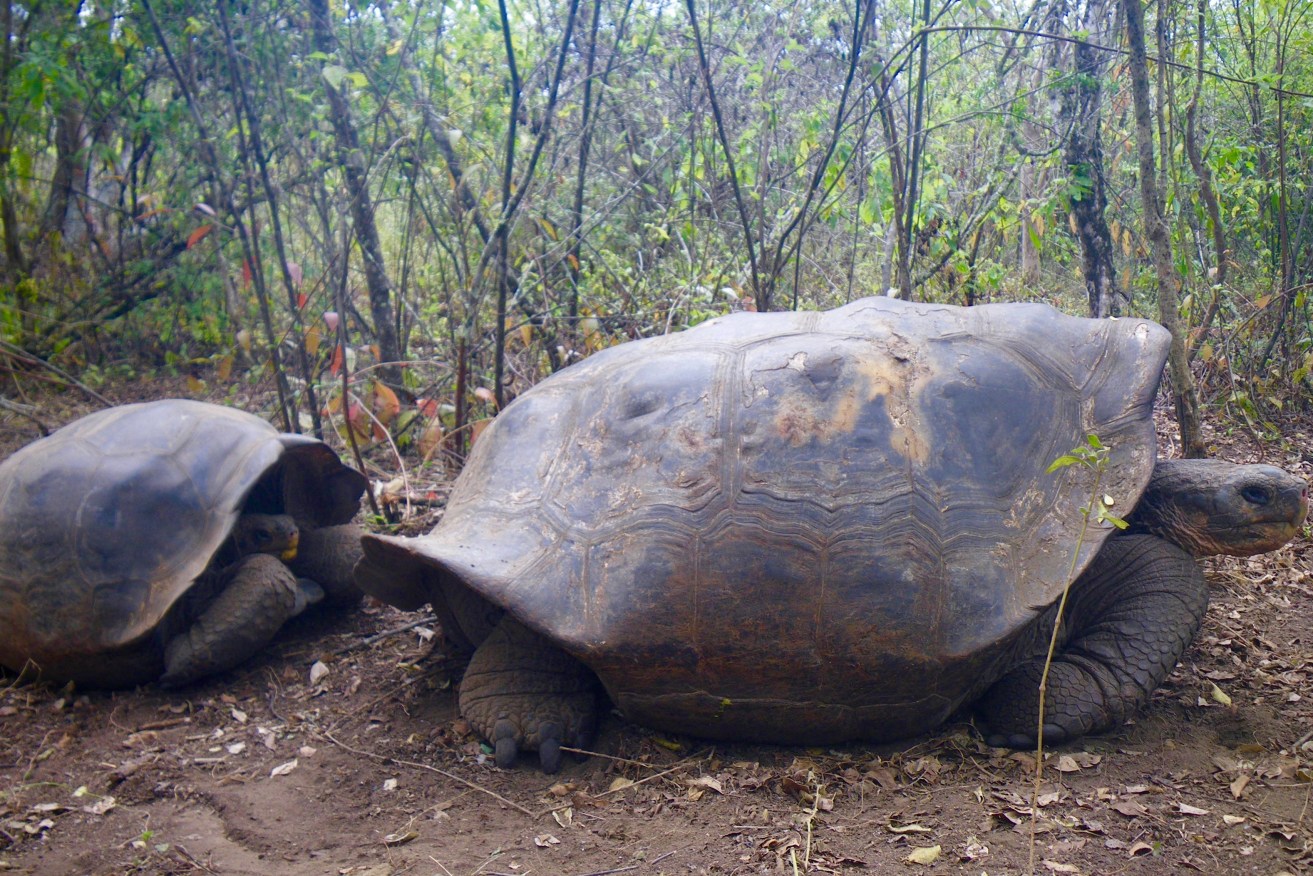
Back from the dead: giant tortoise relatives could revive a lost species
Scientists from around the world are hoping to return a lost species of giant tortoise to the world-famous Galápagos Islands.

Caption – In 2008 researchers found tortoises with the distinctive saddleback shells such as the adult tortoise, right, on Isabela Island in the Galápagos. Photo: Luciano Beheregaray, Flinders University.
The discovery of DNA links or ‘high ancestry’ to extinct Floreana species of giant tortoise means the mega-herbivore could one day be returned to the island for repatriation via a captive-breeding program – perhaps within the next five years.
Professor Luciano Beheregaray, Head of the Molecular Ecology Group at Flinders University, says the conservation effort will be a major milestone in jump-starting the recovery of the Foreana Island’s exotic ecosystem which critically depends on the mega herbivore.
The exciting discovery, outlined in Scientific Reports, describes how the discovery was made after an international expedition to a remote volcano on Isabela Island in the Galápagos found many giant tortoises with high ancestry from the extinct Floreana Island tortoise (Chelonoidis elephantopus).
Giant tortoises were transported by helicopter and then ship from the volcano’s slopes to the Galápagos National Park Breeding Center on the central island of Santa Cruz.
DNA analyses used by the experts from the US, Belgium, Ecuador, Greece, Italy and Professor Beheregaray in South Australia, then assigned the ancestry of the relocated tortoises using reference databases containing data from all extant and extinct species of Galápagos giant tortoises.
The 23 relocated tortoises found to have high ancestry to the extinct Floreana species are now being used in a genetically-informed captive breeding program that aims to repatriate this species to Floreana Island.
“Our discovery and the captive breeding program raises the possibility that the extinct Floreana species could be revived,” says ARC Future Fellow Professor Beheregaray.
Charles Darwin wrote about the harvesting of the species of tortoise found only on Floreana Island, which was exterminated within 15 years of his visit to the Galápagos in 1835.
Tortoises were removed from Floreana more than two centuries ago by mariners looking for food.
However, in 2008 the researchers found tortoises with the distinctive saddleback shells on Isabela, an island where native species have dome-shaped shells (see photo).
Several DNA-based analyses were then used to show that these animals were descendants of the Floreana species.
Ironically, it was the haphazard translocations by mariners killing tortoises for food some 200 years ago that created the unique opportunity to revive this lost species today, says Yale University’s Gisella Caccone, who coordinated the latest research study.
As a result of that discovery, the Galápagos National Park, together with the Galápagos Conservancy, carried out an ambitious, logistically complex, and strenuous expedition in late 2015 to find and relocate genetic relatives of the extinct species of tortoise and to launch a breeding program aimed at restoring them to their native island.
“That expedition was a success,” says Professor Beheregaray.
The geneticists are now working together with the Galápagos National Park and the Galapagos Conservancy to implement a monitored breeding program with the animals relocated from Isabela Island.
This program will strive to preserve in future generations the diversity of the breeders and to maximise the Floreana species’ genomic representation in their offspring.
The current plan is to release young tortoises on the island within five years, to jump-start the recovery of the island’s ecosystem which critically depends on this mega herbivore.
The expedition was funded by the Galápagos National Park, Galápagos Conservancy, and National Geographic Society.
Identification of Genetically Important Individuals of the Rediscovered Floreana Galápagos Giant Tortoise (Chelonoidis elephantopus) Provide Founders for Species Restoration Program – read the paper here.




